I agree with anders abel. There won't be a way to do this using a float number representation.
In direct result of IEE 1985-754 only the numbers that can be represented by

can be stored and calculated with precisly (as long as the chosen bit number allows this).
For Example :
1024 * 1.75 * 183.375 / 1040.0675 <-- will be stored precisly
10 / 1.1 <-- wont be stored precisly
If you are hardly interested in exact representation of rational numbers you could write your own number-implementation using fractions.
This could be done by saving numerator, denominator and sign. Then operations like multiply, subtract, etc. need to be implemented (very hard to ensure good performance). A toString()-method could look like this (I assume cachedRepresentation, cachedDotIndex and cachedNumerator to be member-variables)
public String getString(int digits) {
if(this.cachedRepresentation == ""){
this.cachedRepresentation += this.positiveSign ? "" : "-";
this.cachedRepresentation += this.numerator/this.denominator;
this.cachedNumerator = 10 * (this.numerator % this.denominator);
this.cachedDotIndex = this.cachedRepresentation.Length;
this.cachedRepresentation += ".";
}
if ((this.cachedDotIndex + digits) < this.cachedRepresentation.Length)
return this.cachedRepresentation.Substring(0, this.cachedDotIndex + digits + 1);
while((this.cachedDotIndex + digits) >= this.cachedRepresentation.Length){
this.cachedRepresentation += this.cachedNumerator / this.denominator;
this.cachedNumerator = 10 * (this.cachedNumerator % denominator);
}
return cachedRepresentation;
}
This worked for me. At the operations itself with long numbers I got some problems with too small datatypes (usually I don't use c#). I think for an experienced c#-developer it should be no problem to implement this without problems of to small datatypes.
If you want to implement this you should do minifications of the fraction at initializing and before operations using euclids greatest-common-divider.
Non rational numbers can (in every case I know) be specified by a algorithm that comes as close to the exact representation as you want (and computer allows).
